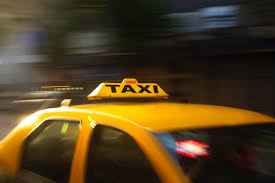When hopping into a taxi, have you ever wondered why your fare fluctuates from one ride to another? Understanding the factors that affect taxi fares can help demystify this seemingly unpredictable aspect of transportation. Let’s delve into the various elements that contribute to taxi pricing:
- Distance Traveled: One of the most fundamental factors influencing taxi fares is the distance covered during the journey. Typically, taxis charge based on the distance traveled, with rates often calculated per mile or kilometer. The longer the distance, the higher the fare.
- Time Spent in the Taxi Cab (Waiting Time): In addition to the distance traveled, the time spent inside the taxi also contributes to the overall fare. Waiting time refers to the duration passengers spend inside the taxi while it is stationary or moving slowly due to traffic congestion or traffic lights. Taxi meters may include a waiting time component to account for this.
- Time of Day (Peak vs. Off-Peak Hours): Taxi fares often vary depending on the time of day. During peak hours, such as rush hours or late nights when demand is high, taxi companies may implement surge pricing, resulting in higher fares. Conversely, off-peak hours may offer lower fares due to reduced demand.
- Traffic Conditions: Traffic congestion can significantly impact the duration of the journey, leading to increased waiting time and, consequently, higher fares. Taxis may charge additional fees or implement dynamic pricing strategies during times of heavy traffic to compensate for the delays experienced by passengers.
- Additional Surcharges or Fees: Taxi fares may include various surcharges or fees beyond the base rate and distance traveled. These surcharges can include tolls for using toll roads or bridges, airport fees for pickups or drop-offs at airports, luggage fees for transporting bulky or excessive luggage, and extra person fees for additional passengers beyond a certain limit.
- Special Circumstances like Holidays or Events: During holidays, festivals, or major events such as concerts or sports games, taxi companies may implement special pricing policies to accommodate increased demand. This can result in higher fares or surcharges to reflect the heightened demand for transportation services during these periods.
Understanding these factors can help passengers anticipate and budget for taxi fares more effectively. Moreover, it underscores the importance of transparency and clarity in pricing policies adopted by taxi companies to ensure fair and equitable pricing for passengers.
Next time you hail a taxi, keep these factors in mind to better understand the dynamics behind the fare displayed on the meter. By staying informed, you can navigate the world of taxi travel with greater confidence and clarity.


